Index

Review: Almost everything it’s cracked up to be
Google finally seems to be getting its act together. A few months ago we went on and on about the slow pace of ICS rollouts, but now it seems the Android team managed to pull off a proper update rollout.
Last night, one of our lab mice lit up with a system update and kindly asked for a reboot. We were happy to oblige and we spent the better part of the morning playing around with Jelly Bean on a Nexus S, the continental I9023 version to be precise, all stock and unlocked. We are still waiting for our Nexus 7 sample, the Nexus Galaxy has yet to receive a Jelly Bean OTA update, but that doesn’t really matter since our Vienna team misplaced the sample in a mosh pit.
So we are in a rather awkward situation – we will have to get to know Jelly Bean on the oldest and slowest device to receive the update. However, this also opens up a number of possibilities. The Nexus S rocks a 1GHz A8 processor with 512MB of RAM, a far cry from today’s high-end Android phones, with multicore chips hitting 1.5GHz and more. Basically the Nexus S is here to embarrass Android phone makers who failed to deliver timely updates for their phones. That would be Samsung, HTC, Motorola, LG, Sony, Sony Ericsson, ZTE, Huawei, Lenovo, Acer and every other company on God’s green earth that ever launched an Android handset.
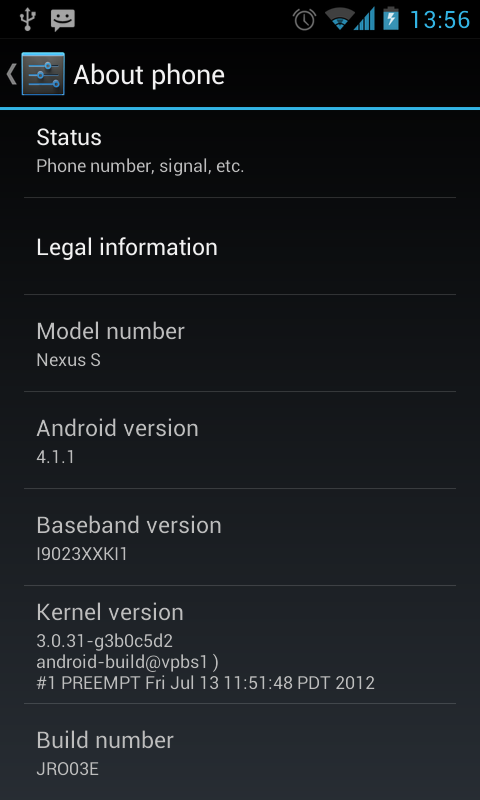
The 4.1.1 update itself is somewhat smaller than the previous ICS update (114MB vs. 128MB), but then again Jelly Bean is more of an evolutionary update than a major overhaul of the OS like ICS. It’s the “tick” in the Android tick-tock update cycle. The UI remained largely unchanged, which is a good thing. If it ain’t broke, don’t fix it. The unlock screen now features a shortcut to Google Now and a redesigned touch indicator. We think the understated circle on the ICS screen looked a bit better.
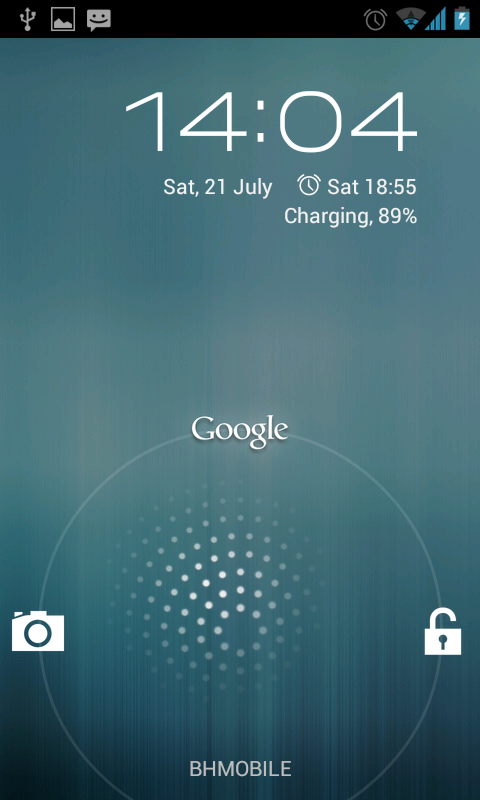
As you probably know already, Google Now, coupled with a great voice search engine, is the headline feature of Jelly Bean. However, since we just got the update we really can’t say much about Google Now. It needs a few days to figure out your daily routine and make any sense whatsoever.
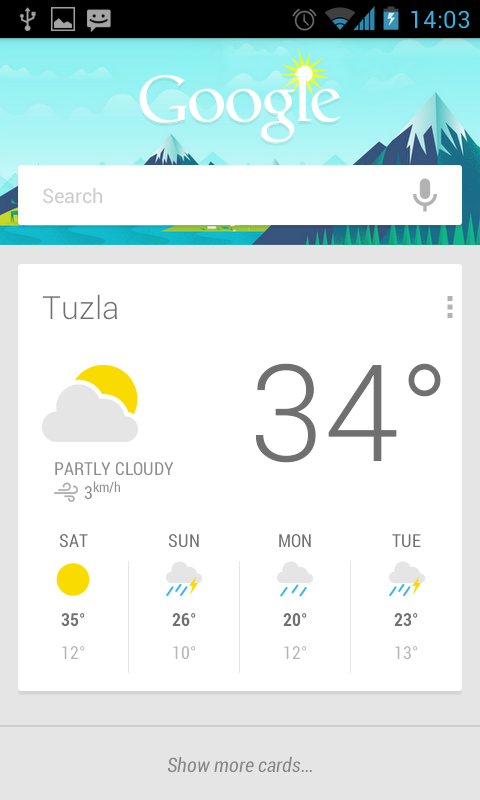
Voice search worked like a charm and it did not seem to mind my thick Balkanese accent too much. Compared to Apple’s Siri, the voice sounds a whole lot better, a bit more human, and a little less Al Gore-ish or Mitt Romney-ish. Google demoed the service in American English with a nice female voice to boot. However, our sample thought a British accent delivered in a male voice would work better and it does. Well, at least it does for me, I’m a Monty Python fan.

Unlike Siri, Google does not rely on voice that much. Cards are the name of the game and it is possible to switch off voice altogether, or limit it to headphones only. It all works very well indeed, but I simply can’t escape the feeling that the Nexus S is a bit underpowered to cope with voice search. Also, Google Now takes a couple of seconds to load and seems sluggish. Still, it’s pretty impressive to see such functionality on a two-year old phone. Sorry iPhone 4 users, Google out-Appled you this time around.
You’re cooking with butter
Although Google Now is the headline grabbing feature, there’s a lot more to Jelly Bean. Project Butter is just what the doctor ordered for the Nexus S. Yes, everything feels a bit faster. Transitions are seamless, scrolling between home screens or through the app drawer is faster and smoother, but to be perfectly honest it doesn’t not seem all that quicker than ICS. The difference is a bit more pronounced in the task manager, or while scrolling through the widget drawer. It’s an improvement, no doubt about that, there’s a lot more fluidity across the whole UI, but we were hoping for a bit more. Project Butter should make more of a difference on faster devices – we just get the feeling it’s running into a wall on the old 1GHz Hummingbird.
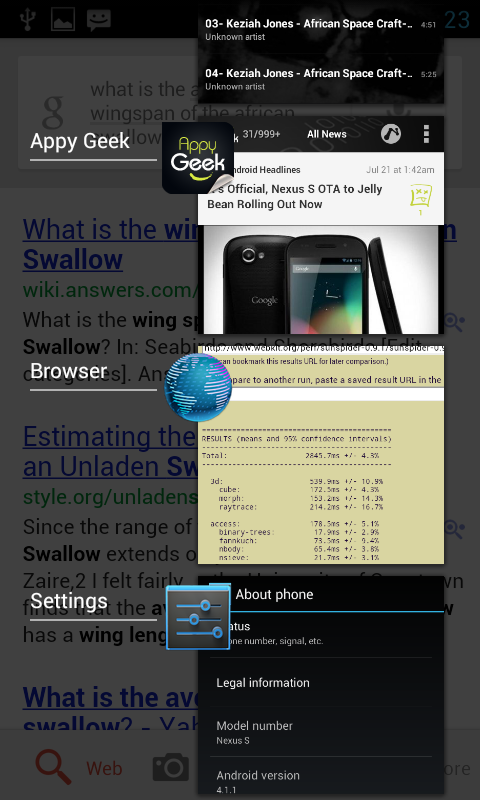
Over the past few weeks Google updated a range of apps, including Google Music, YouTube, Maps, Google+ and many others. Jelly Bean also brings a bunch of updates to camera and gallery apps, as well as countless minor tweaks. Currents and Play Magazines are also bundled in the update, but for some reason Chrome is not. In any case the end result is impressive. Although ICS and even Gingerbread users can also enjoy most of the updates, Jelly Bean offers them right out of the box, with Google+ integration and a host of clever tricks. It all just feels a lot more polished than in previous Android versions.

Personally I found Currents very interesting, even on a low-res 4-inch screen, and I can’t wait to check it out on the Nexus 7. It’s just one of those things you need to try yourself, it seemed like a daft idea when Google showed it off, but now I’m sold.

The revamped Camera app is also a nice touch, with a simple slide-to-review feature and a smooth photo roll which allows you to delete unwanted photos by simply flicking them off the screen. The Gallery app brings an improved slideshow feature, better animations and zoom control. However, on more than one occasion we noticed a bit of lag, something that we didn’t experience in ICS.

Google is very proud of Android notifications, and rightly so. Notifications are practically Android's trademark feature, Google pioneered them and proved that it can out-innovate Apple from time to time, although it is just a matter of time before iPhone fanatics start saying that Apple came up with them first. Joking aside, with Jelly Bean notifications have really come of age. Forget about the smooth UI, new apps and features – in normal everyday use notifications will make more of a difference. Users can expand certain notifications, allowing them to read emails or return a phone call or text straight from the notification dropdown. You can also turn off annoying notifications in app settings. [i.e. Facebook. Ed]
Performance
And now for some serious stuff, a few performance figures. Surely, a simple software update can’t work miracles on a two-year old phone? Think again. We included the Nexus S in our standard phone chart last year and updated the results with ICS a few months ago. Back then it scored 6469ms in Sunspider, with the stock ICS browser. However, with a bit of Jelly Bean grease, it managed 2845ms and 3750ms with the stock browser and Chrome respectively. These figures place it on par with the LG Optimus X2 and even Samsung’s Galaxy Note, both on Gingerbread. It almost sounds too good to be true. However, we see the same trend in Browsermark. A few months ago we scored 35753 with the ICS stock browser. Now the score is 53312, again with the stock browser. Chrome scored 58880, after failing the bench a couple of times. To say that we are impressed would be an understatement.
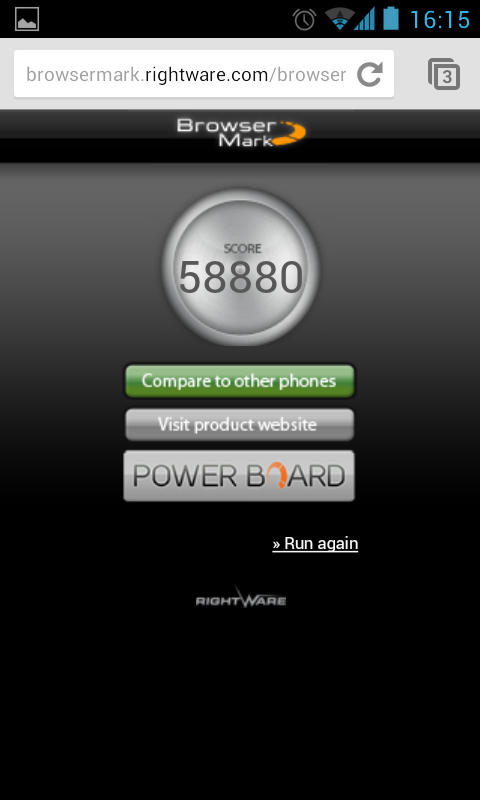
However, hardware-oriented benchmarks like Antutu and Quadrant don’t seem to like Jelly Bean as much as browser benches. We were somewhat baffled to learn that Quadrant and Antutu scores were about 20 percent lower on Jelly Bean vs. ICS. We tried running them a few times, with a cool and rebooted phone, just to make sure throttling had nothing to do with it. Some benchmarks did not run at all, so we could be looking at some compatibility issues. Speaking of which, some apps started to misbehave after the update. Viber was the worst offender, it started throwing its toys out of the pram as soon as the phone was updated, so we were forced to disable it.
Conclusion
Is Jelly Bean all that it’s cracked up to be? Yes and no. It is by no means revolutionary, it’s basically Ice Cream Sandwich done right, with a smoother UI, a few new features, some interesting apps and new notifications options. Tick - tock, remember?
It might not sound like much, but all these incremental improvements come together to create a much better user experience. Yes, user experience, a term coined by spinners to make simple, mundane stuff sound more interesting. However, a mobile OS should be simple, fast, responsive, easy to use in everyday life and well thought through. That’s exactly what Jelly Bean is. Google took an already excellent operating system and with a few minor tweaks it managed to make it even better, that’s all, and that’s a good thing.
But here's the problem. Most users will never get to enjoy Jelly Bean or even ICS the way Google intended. While Google is hard at work improving Android, making it faster and sleeker, phone makers are doing the exact opposite. They are still skinning Android, although skinning is not the right word for what they are doing, as their changes and “improvements” go a lot deeper than this innocent cosmetic term implies. The additional bloat is largely useless and it makes updates a hassle. So, for lack of a better word, they are ruining Android.
It is a bit like buying a brand new car, repainting it with a few ugly decals, then sticking tacky chrome alloys and plastic body kits on it. Just because you can do it, doesn’t mean you should.
Dejan Farkas contributed to this review.



